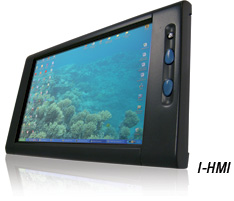Warning UMDF 2 is the latest version of UMDF and supersedes UMDF 1. All new UMDF drivers should be written using UMDF 2.
No new features are being added to UMDF 1 and there is limited support for UMDF 1 on newer versions of Windows 10. Universal Windows drivers must use UMDF 2. For more info, see. The framework represents each USB device as a framework USB device object. A UMDF driver must create a framework USB device object before the driver can access the framework's support for USB I/O targets. UMDF provides USB device object methods that enable a UMDF driver to: • • • • Creating a UMDF-USB Device Object To use the framework's USB I/O target capabilities, a UMDF driver must first obtain a pointer to the interface.
Usb com board driver multi instance free download - USB Com Board Driver ( Multi-instance ), BUSlink MP3 USB Driver, HMS30C7202 USB Driver, and many more programs. The WRM100 and V-WRM modem range offers all the services associated with broadband wi-fi, notably on-board internet, real-time video surveillance,.

To obtain the pointer, the driver must call the QueryInterface method of the device's interface. The following code example shows how to call QueryInterface to obtain the pointer: hr = pdevice->QueryInterface(IID_IWDFUsbTargetFactory, (LPVOID*)&ppUsbTargetFactory); The driver must next call the method to create a USB I/O target object for the device. After the driver creates the USB I/O target, the driver can send requests to the I/O target. Typically, drivers call IWDFUsbTargetFactory::CreateUsbTargetDevice from within an callback function.
After the driver calls IWDFUsbTargetFactory::CreateUsbTargetDevice, the driver can (for example, USB descriptors for the device, USB interfaces, and interface endpoints). The USB descriptors are described in the USB specification. Obtaining UMDF-USB Device Information After a UMDF driver calls the method to create a UMDF-USB target device object, the driver can call the following methods that the USB target device object defines for obtaining information about a USB device: Obtains a device's USB device descriptor. Obtains the number of USB interfaces that the device supports.

Obtains a pointer to a interface that exposes one of the USB interfaces that the device supports. Retrieves capability information that is associated with a USB device.
Pc iso zone. Retrieves a WinUsb power policy. Obtains the WinUsb interface handle that is associated with the I/O target device object. Sending a Control Transfer to a UMDF-USB Device Object A UMDF driver can call the method to format an I/O request that describes a standard, device-class-specific, or vendor-specific USB control transfer. The driver can then call the method to send the request synchronously or asynchronously. Setting Power Policy for a UMDF-USB Device A UMDF driver can call the method to set the power policy that is used by WinUsb for a USB device.
The power policy for a USB device effects changes to power management states for the device.
Virtual drive free download. Can't remember exactly, but in the settings for the virtual PC image, I assume you use Virtualbox?, you need to enable USB for the virtual PC. You should get a 'VirtualPC USB' object or something on the list on the device manager list on your physical PC. In the virtual PC the adapter should then be recognized as the Actia USB device.
Not sure if it might be a problem that the actia USB device is already connected on the physical PC, maybe it might get a conflict? I never installed the Diagbox/Actia driver on the physical PC.
Top Articles
- Targ Reshebnik Onlajn
- Download Gundam 00 The Movie English Dub
- Best Poser 8 Content Library Download Free Download And Full Version 2016
- Easy Fit 5 5 Keygen Crack Download
- State Of Decay Xbox 360 Rgh Full Version
- Coby Media Manager Software Download Mp828
- Cubedesktop Nxt Serial Key Free Download
- Ask The Dust John Fante Mobi
- How To Install Staad Pro V8i In Windows 7 32bit
- Ravanaprabhu Ariyathe Song Download
- Buku Islami Pdf
- Positive Psychology For Dummies Pdf
- Autocom Serial Changer Services
- Rpg Maker Vx Ace Product Key Generator Download
- Silent Hunter 4 Patch 15